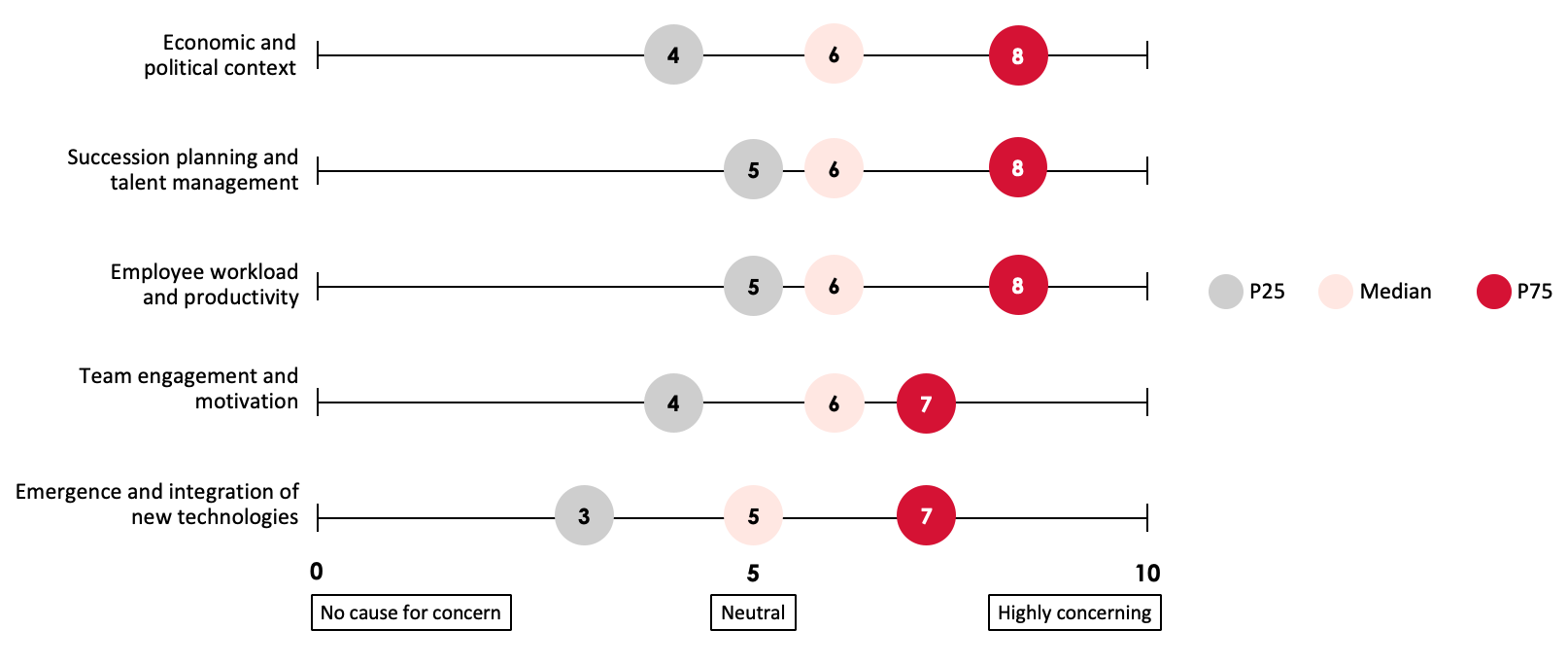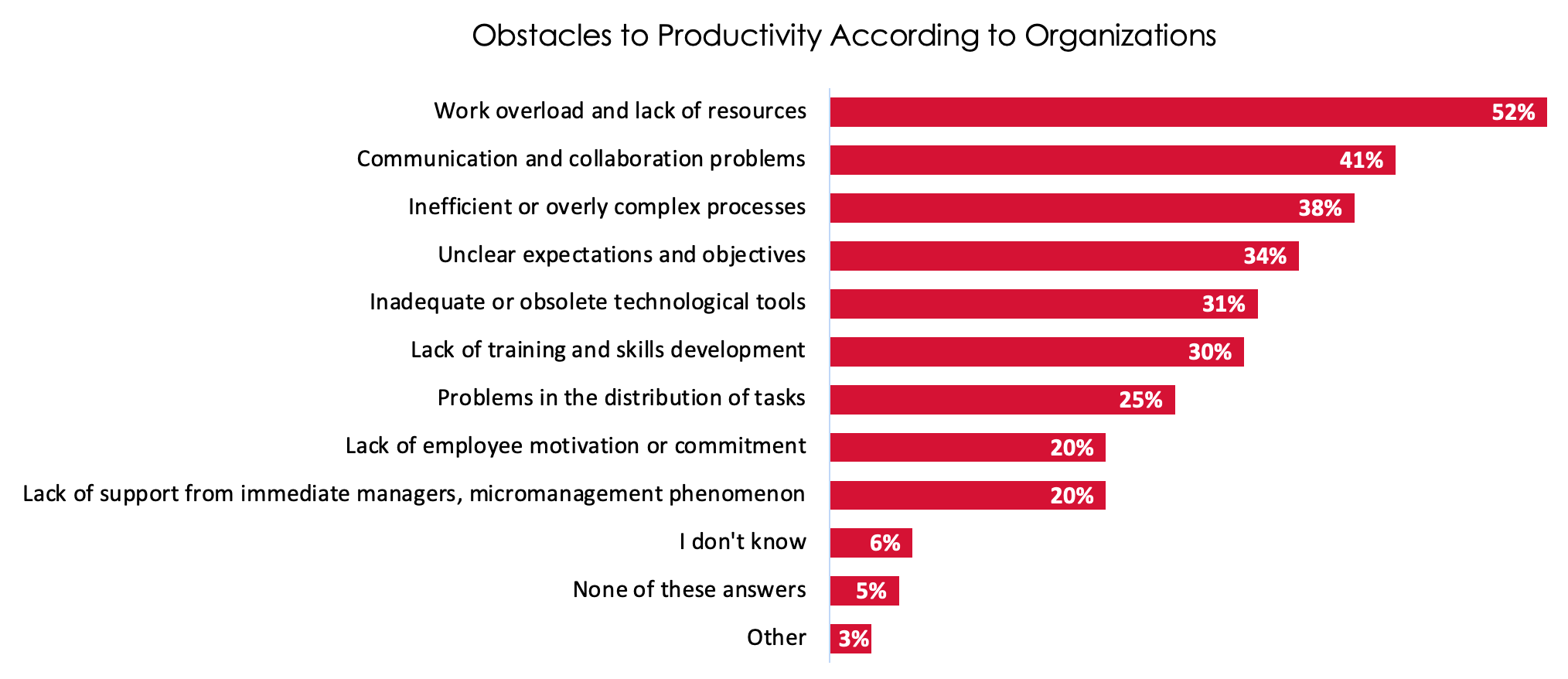
The results of our 2025 Total Rewards Survey in Quebec are now available. This edition brings together strategic data from 450 Quebec companies, providing a comprehensive and up-to-date overview of trends and practices in total rewards.
In a context where economic uncertainty, technological transformation, and productivity pressures are intensifying, the question is no longer “What are others doing?”, but rather “How can we position our total rewards strategy to remain competitive and attractive?”.
Solertia’s 2025 Total Rewards Survey provides exclusive data and key trends to guide your decisions on the following topics:
- 2026 salary forecasts (new feature)
- The generosity of compensation, benefits, and organizational health programs
- The initiatives related to the work environment and organizational development
Why is This Crucial Now?
Your workforce is both your engine for growth and your largest expense. High-performing organizations don’t just adjust salaries; they rethink total rewards as a strategic lever.
The 2025 edition of our Survey highlights three major issues that are transforming the way Quebec organizations define their HR priorities:
- Economic and political context: managing costs without losing attractiveness amid political uncertainty
- Succession planning and talent management: anticipating before it’s too late
- Employee workload and productivity: balancing performance and well-being

First Issue
Economic and Political Context: Managing Costs Without Losing Attractiveness Amid Political Uncertainty
Inflation, geopolitical tensions, tariffs… yet wage increase forecasts for 2026 signal a return to normal.
What our Survey reveals:
- The projected salary increases for 2026 are 3.1%
- The planned salary structure adjustments for 2026 are 2.5%
What Are the Concrete Actions to Consider?
1. Consider total rewards as a whole. Now that a return to normal wage increases is expected, employers can focus on the other components of total rewards. Take advantage of this context to rethink and strengthen your employee value proposition so that it is fully coherent and aligned with:
- Your financial reality: what your organization can realistically sustain in the long term;
- Your business strategy: the behaviors and outcomes you want to encourage;
- Your employer brand: the image and experience you want to offer to your current and future employees;
- Your ideal employee profile: adapt your program to meet the needs and aspirations of the ideal employee persona you want to attract and retain.
2. Highlight your total rewards strategy by communicating it to your employees through a total rewards statement:
- 32% of respondents use total rewards statements.
3. Foster a culture of openness and support to address the human challenges linked to current uncertainty. Initiatives such as financial education programs equip your employees to navigate periods of economic and financial pressure more confidently:
- Only 18% of organizations offer a financial education program.
Second Issue
Succession Planning and Talent Management: Anticipating Before it’s Too Late
Demographic changes and workforce mobility are accelerating the need for better talent management and succession planning.
What our Survey reveals:
- Six out of 10 companies anticipate an ownership transfer in the coming years.
- Only 38% of organizations engage in proactive retirement planning.
- Attracting new talent is a less critical issue than in 2024.
- The voluntary turnover rate is below 10% for most companies.
- The average management ratio is seven employees per manager.
What Are the Concrete Actions to Consider?
- Map your positions and key talents, then identify your high potentials to anticipate critical departures and build solid, realistic succession plans. Just over half of organizations have structured talent management programs.
- Establish clear and engaging career paths that allow your employees to envision their future within your organization while developing the skills needed for your future requirements;
- Revisit your work organization to ensure alignment between your resources, business strategy, and upcoming industry transformations.
Third Issue
Employee Workload and Productivity: Balancing Performance and Well-Being
Quebec is experiencing a structural productivity lag2: 52% of organizations cite workload overload as a major barrier.
Our Survey reveals the main obstacles to productivity in Quebec organizations:

What our Survey reveals:
- Work-life balance practices are improving.
- A majority of 86% of organizations monitor employee performance in a structured manner.
- Nearly 57% of organizations have established management routines, aimed at sound governance.
- Remote work is declining, but organizations that maintain it manage it with clear policies and well-defined allowances to support this practice.
- More than half, 52%, of organizations maintain a 40-hour workweek.
What Are the Concrete Actions to Consider?
- Invest in areas where productivity is truly generated (only 38% of companies are already doing this): modernize your processes to eliminate low-value tasks. Combine these material investments with a clear organizational structure to reduce overload and optimize resource use.
- Measure to manage more effectively: Track concrete indicators, such as gross margin, to link your HR, financial, and operational decisions to their real impact on performance.
- Strengthen internal clarity and cohesion: Establish management routines and effective communication mechanisms that ensure constant alignment between leadership, managers, and teams. Clarify roles, priorities, and expectations to reduce gray areas and overload while promoting collaboration.
Take Action
The organizations that stand out are those that turn these findings into levers for action.
At Solertia, we combine expertise in compensation, employee benefits, and organizational strategy to help you build HR practices aligned with your business objectives.
Participation in Our Survey
You participated? Participants in our Survey can enjoy full access to our detailed report, which is provided to them free of charge after their participation. Take advantage of it: it contains valuable insights for your organization!
You did not participate this year? No problem! Sign up now for the 2026 edition and receive the 2025 Key Findings Report for free, offered to all registered participants. You will be able to take part in the next Survey and help shape tomorrow’s insights.
CONTACT US
Do you have questions about your total rewards practices, such as how to position your total rewards strategy to remain competitive and attractive? Or would you like to discuss the statistics from our Survey in more detail? Fill out the form below to connect with our team, we will be happy to discuss your needs with you.
1. Mejia, J. H., Safa, N., Rosa, J. G. et Cisneros, L., avec la collaboration d’Alstream, K., Delorme, R. et Agredano, F., 2024, Indice entrepreneurial québécois 2024 : Y a-t-il un virage dans les tendances entrepreneuriales? [Quebec Entrepreneurial Index 2024: Is there a shift in entrepreneurial trends?, free translation], Réseau Mentorat, La Sphère HEC Montréal, Léger, Montréal, QC, p. 121.
2. Reference in French only: Deslauriers, J., Gagné, R., Paré, J. Centre sur la productivité et la prospérité- Fondation Walter J . Somers, HEC Montréal, Productivité et prospérité au Québec, Édition 2025, https://cpp.hec.ca/wp-content/uploads/2025/05/PP-2024-01.pdf.
Let's make an appointment
"*" indicates required fields
Partager

